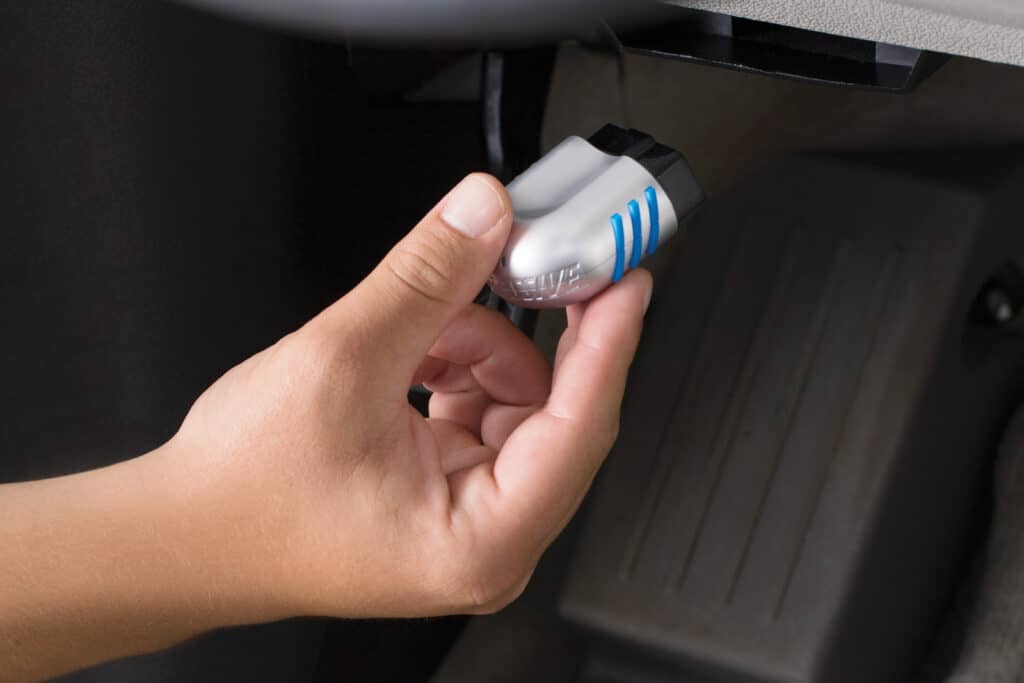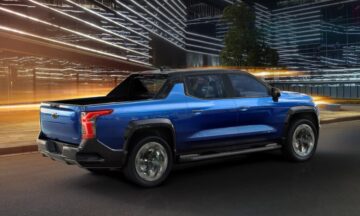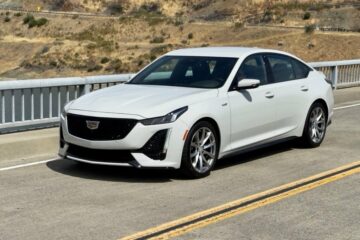Auto insurance rates are being hit hard by a cycle of rising payouts due to inflation, leading to soaring premiums and increasing cross-shopping by customers.

The result, according to the J.D. Power 2023 U.S. Insurance Shopping Study, released today, is “an increased focus on saving money as large numbers of auto insurance customers shop for new policies and switch to new carriers, largely based on price.”
“Auto insurance customers are starting to shop for insurance like they shop for gas,” said Stephen Crewdson, senior director, insurance business intelligence at J.D. Power.
“They are taking a much more active stance in seeking out plans that fit their needs and their budgets, which could have a serious long-term effect on carriers that have been working for years to build lifetime value through bundling and other initiatives. In the near term, this shopping trend manifests itself in increased customer interest in usage-based insurance (UBI) plans and some reshuffling of market share among the top carriers.”
This is not new technology. For nearly a decade, Progressive Insurance has offered policyholders the opportunity to install a device in the vehicle’s OBD-II diagnostic port that tracks their driving behavior and adjusts the rate accordingly.
Other insurers followed, teasing drivers with the potential for slightly lower rates, while hiding the likelihood of higher rates based not on claims history, but on driving patterns.
Your car can report on your driving

TheDetroitBureau.com has previously reported on this coverage strategy, highlighting the potential for reduced insurance rates based on vehicle telematics reporting. At least 17 automakers have introduced these insurance packages, all of which make use of a vehicle’s built-in monitoring and using the collected driving data to provide a discount based on a motorist’s driving behavior.
“Insurance represents typically 10%-15% of a vehicle’s total cost of ownership. So the ability to reduce this would have a major positive impact on OEM’s sales,” said Andrew Jackson, Ph.D., research director at Ptolemus Consulting Group, which recently released a study on connected car insurance.
When you agree to telematics-based insurance, your rates are largely based on your driving habits, with demerits including speeding, hard acceleration or braking, and hard cornering. Your car will also report how often you use the hands-free phone support to make calls.
The telematics will also report on how far you drive. Known as pay-per-mile car insurance, its cost is based on how many miles the car’s owner drives. Customers are charged both a fixed monthly base fee and a variable monthly mileage rate, meaning your monthly mileage fee changes based on the number of miles you drive each month.
The part they won’t tell you about
But there’s a darker side to this that the insurance companies won’t tell you about.

Your insurer will also track where you drive, and when you drive, and then make judgments about your insurance accordingly. If you drive after 10 pm or drive on a road with a higher-than-average claims history, your insurance rates will go up. Same if you drive in neighborhoods that your insurance company doesn’t like. It’s a modern form of redlining that will inevitably cause higher insurance rates for less wealthy people, and those who go to work late at night or early in the morning.
Finally, the insurance companies will not publish their standards to earn good rates, or tell you when and how you violated those standards if they raise your rates. You give them all your information, and they will give you nothing back. You’re in the dark, and they can raise your rates for any reason or no reason.
So before you fall for the pitch that your rates can be lower if you give up your privacy, take a good look at your whole picture. Because once the insurance company has permission to monitor your every move, you’ll never get back your old deal.
Electric vehicles get higher rates
According to J.D. Power, “drivers are increasingly looking to lower the cost of insurance, particularly on battery electric vehicles, which tend to cost more to insure than conventional cars.”
The reasons behind the disparity include the fact that EVs tend to be more expensive to purchase and to repair than other vehicles, which affects insurance rates. J.D. Power also notes that insurers are wary due to the fast 0-60 times of EVs; which is a sales point for many automakers.
This means that EV owners in particular are looking for better insurance rates. Automakers floated the idea of subscription-based driving, where you pay a monthly fee to the automaker for use of a vehicle, with insurance included in the price. However, few consumers seem to have stepped up to those programs, and they haven’t been pushed. Hyundai recently announced a new plan for its EVs, however.

Cross-shopping increases; customer satisfaction flatlines
According to J.D. Power, “average overall satisfaction among auto insurance shoppers is 861 on a 1,000-point scale, which is flat from a year ago, even though shopping and switching rates have increased in the same period. The 30-day average shopping rate reached 13.1% in March 2023, the highest rate since June 2021 and well above the 2021 average of 11.4%. The 30-day average switch rate hit 4.1% in March 2023, which compares to an average of 3.4% for all of 2021.”
The reasons are obvious. Average auto insurance payments rose 14.5% in February 2023. That’s well over twice the 6% rate of inflation as insurance costs soar. Among those shopping for a new insurer, 44% report price checking and 42% say a rate increase was behind their decision. Of those, 41% reported to J.D. Power that their rate increased 20% or more.
Who’s the best?
J.D. Power reports that State Farm ranks highest among large auto insurers in providing a satisfying purchase experience for a third consecutive year, with a score of 877. Liberty Mutual at 865 ranks second and Nationwide at 861 came in third. The segment average is 861.
The Hartford ranks highest among midsize auto insurers for a second consecutive year, with a score of 887. Erie Insurance at 878 ranks second and Automobile Club of Southern California (AAA) at 870 took third. The segment average is 863.
The J.D Power U.S. Insurance Shopping Study is based on responses from 10,845 insurance customers who requested an auto insurance price quote from at least one competitive insurer in the previous nine months. The study was fielded from March 2022 through January 2023.
- SEO Powered Content & PR Distribution. Get Amplified Today.
- PlatoAiStream. Web3 Data Intelligence. Knowledge Amplified. Access Here.
- Minting the Future w Adryenn Ashley. Access Here.
- Source: https://www.thedetroitbureau.com/2023/04/angry-about-your-rising-car-insurance-youre-not-alone/
- :has
- :is
- :not
- :where
- $UP
- 1
- 10
- 11
- 13
- 14
- 2021
- 2022
- 2023
- a
- AAA
- ability
- About
- above
- acceleration
- According
- accordingly
- active
- Ad
- After
- ago
- All
- alone
- also
- among
- an
- and
- Andrew
- any
- ARE
- AS
- At
- auto
- automakers
- automobile
- average
- back
- base
- based
- battery
- Battery Electric Vehicles
- BE
- because
- been
- before
- behind
- being
- BEST
- Better
- both
- Budgets
- build
- built-in
- business
- business intelligence
- but
- by
- california
- Calls
- CAN
- car
- car insurance
- carriers
- cars
- Cause
- Changes
- charged
- checking
- claims
- club
- COM
- Companies
- company
- competitive
- connected
- connected car
- consecutive
- consulting
- Consumers
- conventional
- Cost
- Costs
- could
- coverage
- customer
- Customer satisfaction
- Customers
- cycle
- Dark
- data
- deal
- decade
- decision
- device
- Director
- Discount
- Doesn’t
- drive
- drivers
- driving
- due
- each
- Early
- earn
- effect
- Electric
- electric vehicles
- EV
- Even
- Every
- expensive
- experience
- Fall
- far
- farm
- FAST
- February
- fee
- few
- fit
- fixed
- flat
- FLO
- Focus
- followed
- For
- form
- from
- GAS
- get
- getting
- Give
- Go
- going
- good
- Group
- Guy
- Hard
- Have
- help
- higher
- highest
- highlighting
- history
- Hit
- hope
- How
- However
- HTTPS
- idea
- if
- Impact
- in
- include
- included
- Including
- Increase
- increased
- Increases
- increasing
- increasingly
- inevitably
- inflation
- information
- initiatives
- install
- insurance
- insurers
- Intelligence
- interest
- introduced
- ITS
- itself
- J.D. Power
- Jackson
- January
- jpg
- judgments
- june
- known
- large
- largely
- Late
- leading
- Liberty
- lifetime
- like
- long-term
- Look
- looking
- major
- make
- many
- March
- Market
- Marketing
- max-width
- May..
- meaning
- means
- Modern
- money
- Monitor
- monitoring
- Month
- monthly
- monthly fee
- months
- more
- morning
- move
- much
- mutual
- Nationwide
- Near
- nearly
- Need
- needs
- New
- night
- no
- Notes
- nothing
- number
- numbers
- obvious
- of
- offered
- often
- Old
- on
- once
- ONE
- Opportunity
- or
- Other
- out
- over
- overall
- owner
- owners
- ownership
- packages
- part
- particular
- particularly
- patterns
- Pay
- payments
- payouts
- People
- period
- permission
- phone
- picture
- Pitch
- plan
- plans
- plato
- Plato Data Intelligence
- PlatoData
- Point
- policies
- positive
- potential
- power
- previous
- price
- Prices
- privacy
- probably
- Programs
- progressive
- provide
- provider
- providing
- publish
- purchase
- pushed
- raise
- ranks
- Rate
- Rates
- reached
- Reader
- reason
- reasons
- recently
- reduce
- Reduced
- released
- rely
- repair
- report
- Reported
- Reporting
- Reports
- represents
- requested
- research
- result
- rising
- road
- ROSE
- s
- Said
- sales
- same
- satisfaction
- saving
- Savings
- say
- Scale
- score
- Second
- seeking
- segment
- senior
- serious
- Share
- Shop
- Shoppers
- Shopping
- show
- side
- since
- Snapshot
- So
- soaring
- some
- Southern
- standards
- Starting
- State
- State Farm
- Stephen
- Study
- support
- Switch
- Take
- taking
- Technology
- telematics
- tell
- term
- than
- that
- The
- their
- Them
- then
- These
- they
- Third
- this
- those
- Through
- times
- tired
- to
- today
- tool
- top
- Total
- track
- Trend
- Twice
- typically
- u.s.
- UBI
- use
- using
- value
- vehicle
- Vehicles
- was
- WELL
- when
- which
- while
- WHO
- will
- with
- Work
- working
- would
- year
- years
- you
- Your
- zephyrnet












